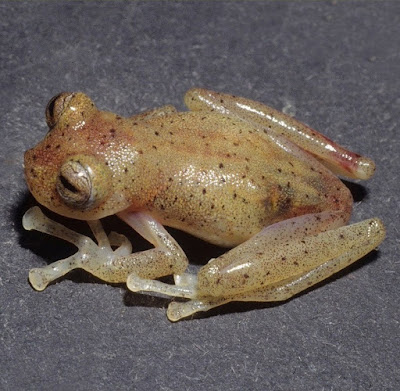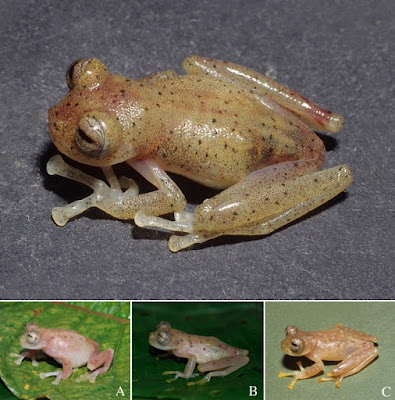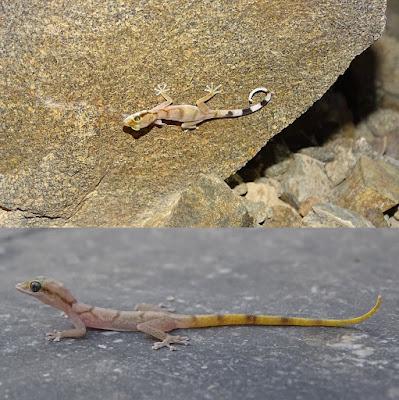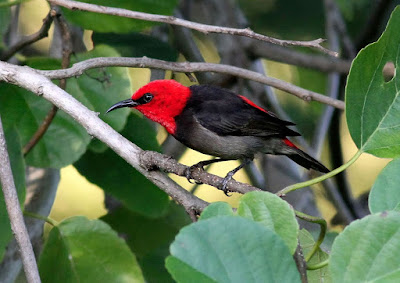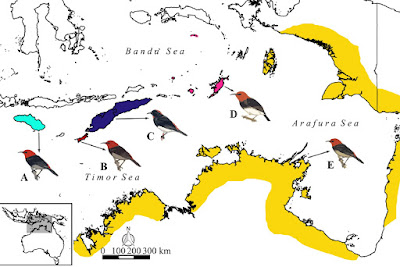[Most Recent Entries] [Calendar View]
Sunday, January 7th, 2018
| Time | Event | ||||
| 11:42a | [Herpetology • 2017] Nymphargus caucanus • A Taxonomic Review of Tan-Brown Glassfrogs (Anura: Centrolenidae), with the Description of A New Species from Southwestern Colombia
Abstract. Thirty species of the glassfrogs genus Nymphargus, including a new species, are known to inhabit the cloud forest of the Andes of Colombia and Ecuador. Four of these species (Nymphargus anomalus, N. ignotus, N. rosada, and the new species) are unusual by having a tan-brown dorsal coloration instead of the widespread green coloration commonly found in glassfrogs. Herein, we review tan-brown glassfrogs species, providing information on their external morphology, color ontogeny, ecology, and distribution. The new taxon inhabits the Andes of southwestern Colombia, Departamento del Cauca, and it is distinguished from other centrolenids by having a tan-brown dorsum with dark spots lacking ocelli, reduced (basal) webbing between outermost fingers, and lacking iridophores on the digestive tract and hepatic peritonea. We also find that Nymphargus ignotus is a polymorphic species distributed along the western flank of the Cordillera Occidental in Colombia. The egg masses of N. ignotus are similar to those known in others Nymphargus species, except for the presence of supplementary empty capsules. The distribution, abundance and function of empty capsules and the nature of the tan-brown color pattern in glassfrogs are discussed. Keywords: Amphibia, Cauca, Egg masses, Nymphargus, Munchique National Natural Park (PNN), Systematics
Marco Rada, Jhon Jairo Ospina-Sarria and Juan M. Guayasamin. 2017. A Taxonomic Review of Tan-Brown Glassfrogs (Anura: Centrolenidae), with the Description of A New Species from Southwestern Colombia. South American Journal of Herpetology. 12(2); 136-156. DOI: 10.2994/SAJH-D-16-00026.1 | ||||
| 12:40p | [Herpetology • 2018] Asaccus arnoldi • Systematics, Biogeography and Evolution of Asaccus gallagheri (Squamata, Phyllodactylidae) with the Description of A New Endemic Species from Oman
Abstract The Hajar Mountains are the highest mountain range in eastern Arabia. Despite being classified as a mountain desert, it is considered one of the top biodiversity hotspots of Arabia. As a result of its relatively old geological origin, complex topography, environmental heterogeneity and geographic isolation from other mountain ranges, its fauna and flora have diversified significantly producing high levels of endemicity, particularly amongst reptiles. Several genetic studies indicate that this diversity may still be underestimated, especially within some groups containing morphologically similar species like the nocturnal geckos of the genus Asaccus. These have radiated extensively on both sides of the Gulf of Oman, in the Hajar Mountains and the Zagros Mountains of south-west Asia, and are a good example of the faunal affinities between these two mountain ranges. In the present work, we analyse A. gallagheri, the smallest species of the Arabian radiation, using an unprecedented sampling across its entire distribution range and an integrative approach combining morphological, macroecological and multilocus molecular data with the objective of clarifying its systematics and phylogeography. The results support the presence of two allopatric species within A. gallagheri that split approximately 6 Ma. The newly discovered species is endemic to the Eastern Hajars and is described herein mainly on the basis of its smaller size and high genetic divergence from A. gallagheri. The molecular analyses also uncovered remarkable levels of genetic diversity within both species. The present study highlights the diversity of the genus Asaccus in south-east Arabia and stresses its relevance from a conservation point of view. Key words: Arabia, biogeography, endemicity, geckos, Hajar Mountains, hypervolumes, species delimitation, taxonomy Asaccus Dixon and Anderson, 1973 Asaccus arnoldi sp. nov.    Asaccus arnoldi sp. nov. Etymology. The species epithet ‘arnoldi’ is a genitive Latin noun to honour the British herpetologist, Dr E.Nicholas Arnold, for his life-long dedication and contribution to Arabian herpetology, including the description of the little-known gecko Asaccus gallagheri 45 years ago. ResearchGate.net/publication/321831031_S facebook.com/MarcSimoRiudalbas/posts/10214933978605446 | ||||
| 5:52p | [Ornithology • 2017] Myzomela irianawidodoae • A Colourful New Species of Myzomela Honeyeater from Rote Island in eastern Indonesia
ABSTRACT The avifauna of Rote Island in the Lesser Sundas is not well studied and generally considered to be similar to that of adjacent Timor Island. However, some cases of bird endemism have recently been documented on this island. A population of Myzomela honeyeater is one such example. First observed in October 1990, it has been subsumed with Myzomela dammermani from Sumba Island given its superficially similar appearance. Based on extensive morphological inspection and bioacoustic analysis, we here describe this population as a new taxon to science. Apart from previously overlooked plumage distinctions, the new taxon bioacoustically differs from M. dammermani in the presence or absence of several unique call types and considerable differences across two parameters in shared call types. Considering the importance of bioacoustics in avian species delimitation, we propose that the new Rote Myzomela be considered a distinct species. Given continued habitat conversion across its small range, we propose the International Union for Conservation of Nature and Natural Resources (IUCN) threat status Vulnerable for the species. Key words: bird, Lesser Sundas, Myzomela, new species, Rote Island
Myzomela irianawidodoae, species nova English name: Rote Myzomela Indonesian name: Myzomela Rote Etymology: We are pleased to name this species after Iriana Widodo, the current First Lady of the Republic of Indonesia, to recognise her keen interest in Indonesia’s birdlife and her valuable stewardship and advocacy for Indonesia’s natural environments. ....  Dewi Malia Prawiradilaga, Pratibha Baveja, Suparno, Hidayat Ashari, Nathaniel Sheng Rong Ng, Chyi Yin Gwee, Philippe Verbelen and Frank Erwin Rheindt. 2017. A Colourful New Species of Myzomela Honeyeater from Rote Island in eastern Indonesia. Treubia. 44:77-100. ResearchGate.net/publication/322163070_A Philippe Verbelen, Colin R. Trainor, Veerle Dossche and Rohan P. Fisher. 2017. Rote Island, East Nusa Tenggara Province, Indonesia: an emerging hotspot of avian endemism. BirdingAsia. 27; 57-73. ResearchGate.net/publication/319099457_R Description d'une nouvelle espèce d'oiseau en Indonésie, le Myzomèle de Rote (d'Iriana Widodo) | Ornithomedia.com: ornithomedia.com/magazine/etudes/descrip The discovery of Myzomela irianawidodoae — named after Indonesia’s first lady, Iriana Joko Widodo — involved a series of separate field studies between 1990 and 2015 by different groups of researchers, according to a paper published Dec. 31, 2017, in the scientific journal Treubia. Meet Indonesia’s new honeyeater species from Rote Island news.mongabay.com/2018/01/meet-indonesia |
| << Previous Day |
2018/01/07 [Calendar] |
Next Day >> |
